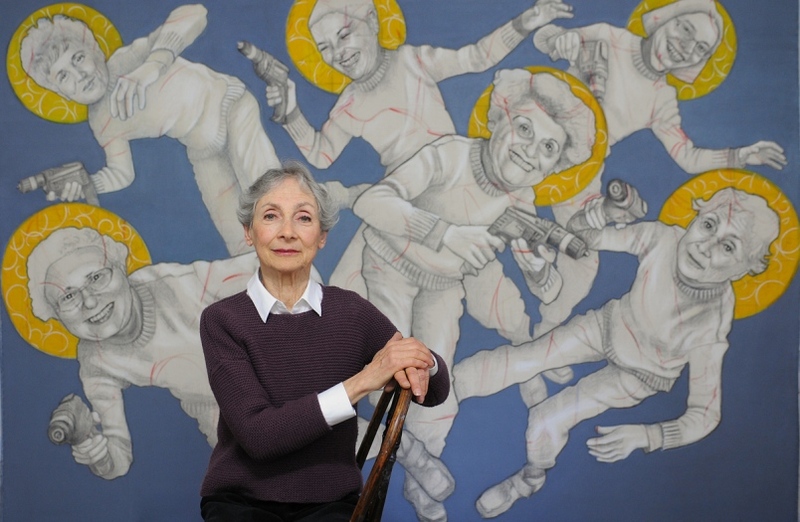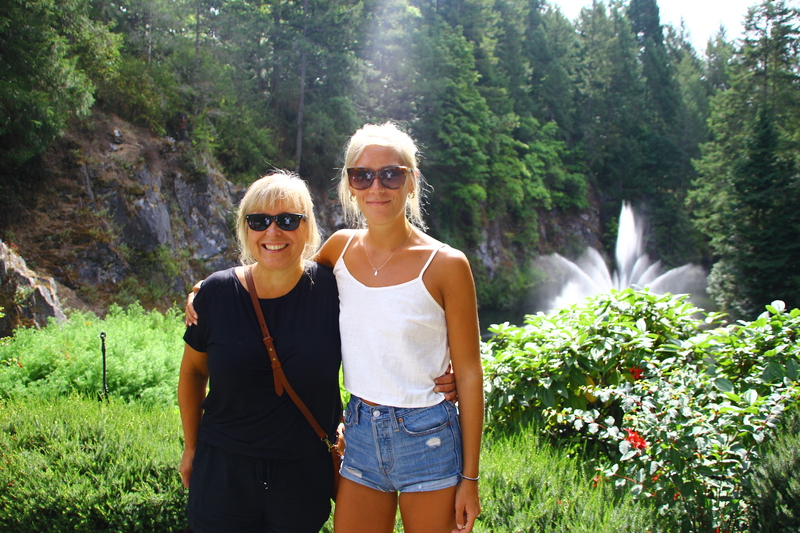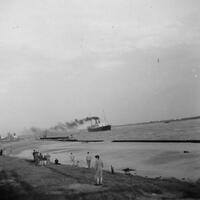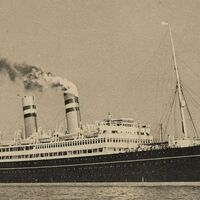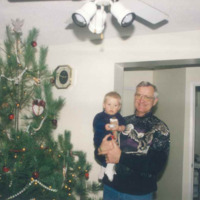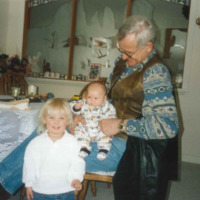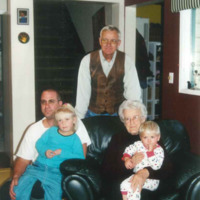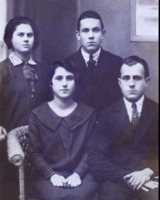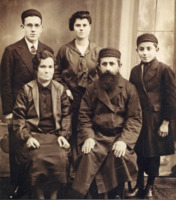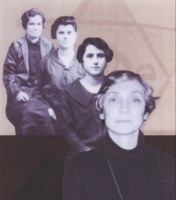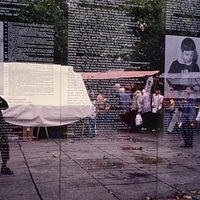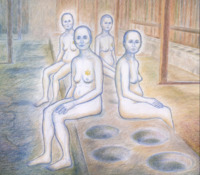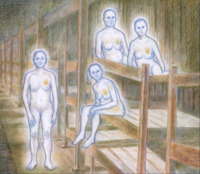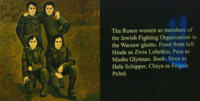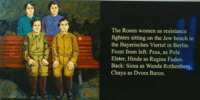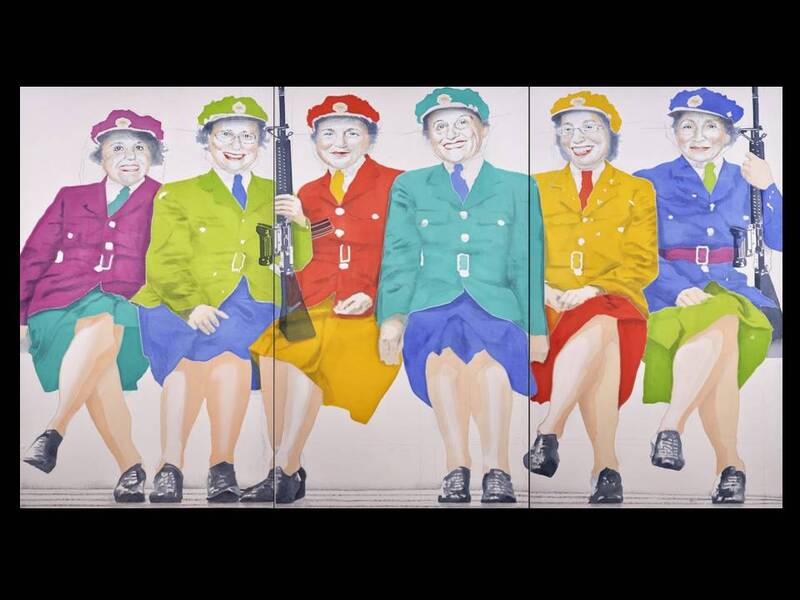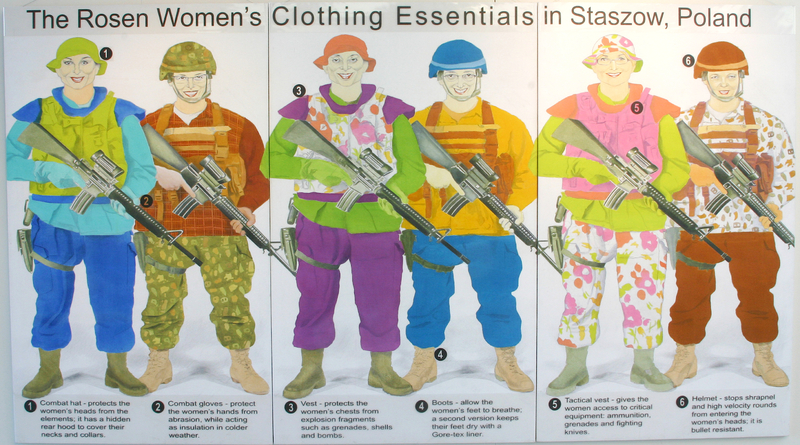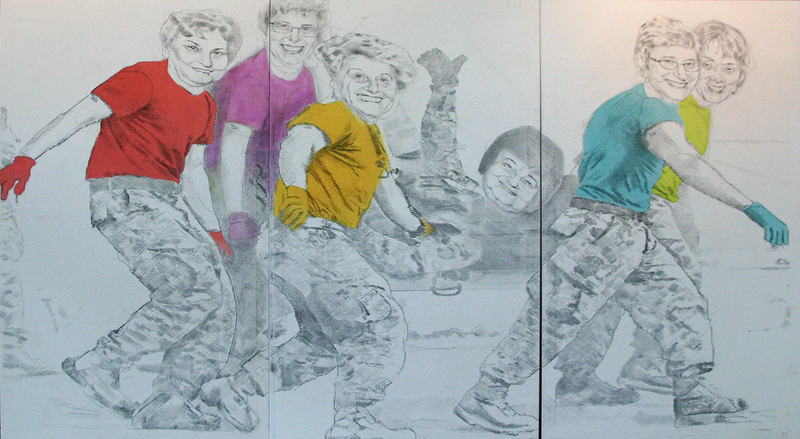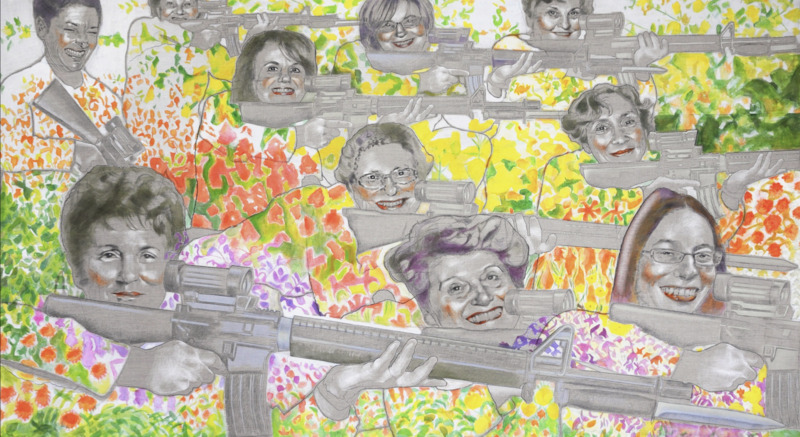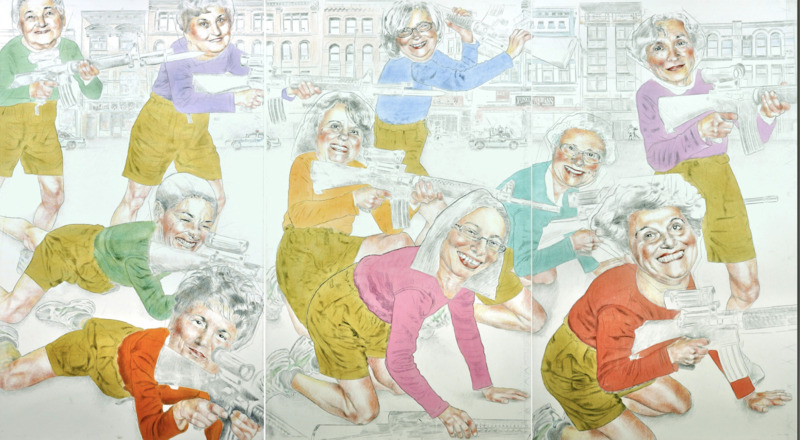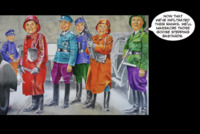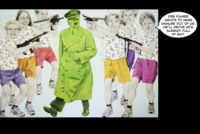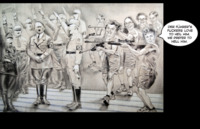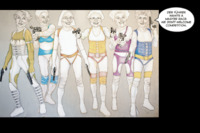Hinda Avery
Hi, everyone! Welcome to our exhibit.
My name is Kästle Van Der Meer and I have been working with Dr. Hinda Avery since January to bring the stories below. Before you read any further, I would like to introduce both myself and Hinda. I am an MA student in the History department at the University of Victoria. I completed my undergraduate degree in History and Gender Studies at UVic in June 2020. My MA thesis, which I will begin writing at the end of April, focuses on resistance to various forms of sexualized violence in concentration camps. Above is a photo of me and my mom, one of the most important people in my life, at the Butchart Gardens. You will read a bit more about me and my family below, so let’s move on to Hinda.
Dr. Hinda Avery, pictured above, is a former professor of Women’s Studies, an artist, a feminist, and an animal rights activist, among other things, who has dedicated her life to equity and equality. Even at age 80, Hinda maintains her passion for learning, as is evidenced by the online biology course she is currently enrolled in. After retiring from academia in 2005, Hinda began a career as an artist, which you will learn more about below.
This exhibit weaves together Hinda's story with an exploration of my grandfather’s experience in Holland during the war to tell two narratives of resistance. You will first learn the story of my relationship to the Holocaust through a retelling of Bob Van Der Meer’s childhood in Holland during the war. Next, you will learn about Hinda’s family and how she has processed the trauma inherited from her mother through artwork.
We hope you have as much fun viewing this virtual exhibit as we did creating it. Most of all, we hope you learn something new and perhaps walk away from our exhibit with a renewed appreciation for stories, artwork, and media that challenge conventional narratives.
Delving into My Family History: Bob Van Der Meer's Story
Growing up, I was always drawn to stories about the Holocaust. I read everything I could about the topic as a child, including every memoir and novel about the Holocaust I could get my hands on. The more I learned, the more I became shocked that such an event could have occurred. Even more, I was astonished that something so awful could have happened in my grandparents’ lifetime. I knew that my interest in the Holocaust had something to do with my grandpa, who grew up in Holland during the war. However, I had no family who died during the war, and knew that I had no Jewish heritage, so I was unsure where this pull stemmed from. Although I was always curious about his experiences under the Nazi occupation of Holland, my grandpa never spoke of this time, and when the war was brought up, he often became apprehensive. For 24 years, I had no idea how the war had shaped my grandfather, who was just 4 years old when the Nazis invaded his hometown of Haulerwijk.
It turns out the occupation shaped him more than I could ever imagine. After discussing my lack of knowledge about my family’s past with Hinda, she encouraged me to ask my grandpa about his experiences. If he wouldn’t talk, she said, ask his siblings. She said that if I didn’t do so now, I would regret it. She was right. So, I called up my grandpa one afternoon and asked if he would talk to me about his childhood in Holland. He was surprisingly open to discussing this time with me, and was very happy I had asked about it. During our call, he recounted a narrative of his life, from birth to the present. Below is part of the story he told me about his childhood in Holland.
In 1936, Ruude (Robert) Van Der Meer was born in Haulerwijk in Friesland province, Holland. After the country was invaded by the Nazis in May 1940, my grandpa and his family spent the remainder of the war in Haulerwijk. Although he was a young child at the time, my grandpa said that some of the most vivid memories of his entire life are from during the war. “You can’t even imagine it” he told me, “if you weren’t there.” He recalled with vivid detail the horrendous violence the Nazis had bought to this small Dutch town, as they did to each and every town they entered:
“The Nazis and that used to come around all the time and they were really… I mean, they’d shoot you first before they’d ask any questions.”
He recalled other forms of violence he witnessed day after day as a young boy. You would walk outside and see people shot and hanged in the streets, he told me. He was right; I hadn't been there, and I couldn’t imagine it.
When I tentatively asked if he knew anyone who got sent away, he spoke of Jewish friends being shipped to concentration camps:
Ah, well, a lot of our close friends, who we lived close to, they were sent to concentration camps. You know, the Jews… they were picked up and shipped out, so yeah. It was, I mean, it’s kind of hard to describe, but it was…they shot people right in front of our house.
I was shocked upon hearing this, and I wanted to know what, if anything, my family had done to combat such injustice. I had heard rumours in my family that the Van Der Meers had engaged in resistance, but I wasn’t sure what form such resistance had taken, or if it had even occurred. When I asked my grandpa he assured me that the family did indeed resist the hatred that had been brought to Haulerwijk. My grandpa recalled how his parents successfully hid Jews and Canadian soldiers underneath their house in a bunker throughout the war. Because his father was a butcher, the family had enough to eat for most of the war, and they also provided food to others when they could afford to do so. This bunker was also where the family spent every night during the war, crammed together underground in case of potential bombings.
Leaving Holland
In 1950 my grandpa’s father decided to leave Holland because currency changes had left the family nearly penniless. They decided to move from war-torn Holland to Canada or Australia; Canada accepted them first. Within three weeks of approval the family boarded the SS Volendam to Canada with only a few suitcases. My entire life, a photograph of a boat has hung the foyer of my grandparent's home, but it was only after talking to my grandpa about his immigration that I learned that this photograph is of the SS Volendam, the ship that brought him to Canada. You can see photographs of the boat below.
After slowly making their way west across Canada for a decade, the Van Der Meer family finally settled in Salmon Arm, B.C., in 1960. My grandfather has been there ever since, and each of his children was born there. In 1997, I was born an hour away in the small town of Revelstoke, B.C. You can find Haulerwijk, Salmon Arm, and Revelstoke pinned on the map below, as well as photos of some of the Van Der Meers.
Hinda Avery's Story
Hinda’s story is much different from my grandfather’s story. Hinda was born in Vancouver in 1940. Her mother, however, was born and raised in Staszów, Poland, a small town near Kraków. You can view the town on the map below. Before the war broke out, Staszów had about 10,000 residents, half of them Jewish. Hinda’s mother Sima left Poland before it was invaded, but much of her family was murdered by the Nazis. Hinda’s mother spent the rest of her life fearing and mistrusting anyone who was not Jewish, and she experienced immense trauma from the murder of her family. This fear and pain was passed on to Hinda, who has lived with it her entire life.
Despite her trauma, Hinda’s mother spoke fondly of her time in Staszów. When her mother died, Hinda decided to visit the town her family had previously inhabited. While she found Staszów to be a friendly, pleasant town, there were no Jews because in 1942 the town’s Jewish population was deported. But visiting Staszów was just the beginning of Hinda’s journey. While in Europe, she sought to discover how and where her grandmother Pesa, aunt Chaya, and other relatives, pictured below, were murdered. Unfortnuately, no records of her family remain.
Hinda went to Treblinka, Madjanek, and Auschwitz-Birkenau. However, seeing these places wasn’t enough; the horror of the Holocaust began in Germany and Hinda sought to discover what Germans were doing to apologize for the systematic mass murder they initiated and carried out. Hinda decided to find answers by looking at Holocaust memorials throughout Germany. Upon doing so, she had many questions. What role did these museums, sites, and memorials play in apologizing for the atrocities committed by the Nazi regime? Are such forms of apology effective and recognized by Jewish communities? Do such memorials alert us to present day anti-Semitism and racism? What is a realistic way for a nation to apologize for crimes against humanity? These questions are considered in the film Hinda directed titled The Art of Apology: Holocaust Memorials in Germany, available in DVD format at the UBC library. The film uses photographs Hinda took while in Europe to explore these questions further. Below, you can see Hinda at some of the memorials she visited, as well as the cover art for The Art of Apology DVD.
Processing Trauma Through Art
While visiting Germany and Poland, Hinda viewed scores of memorials, but realized that none of them reflected her family’s experience. She decided that even if she created it herself, a memorial had to be established for her family. To do so, after she retired from teaching Women’s Studies at UBC in 2005, Hinda put her artistic skills to use.
She specifically felt a need to connect to the female members of her family who had been murdered. Finding overt depictions of the Holocaust too catastrophic to depict using conventional representation, Hinda found the connection to her family by engaging in what she calls a “make-believe process” through painting. Aided by two photographs, Hinda began to paint the Rosen Women, a namesake inspired by her mother's maiden name. She started with depictions of her murdered aunt and grandmother and later added herself and her mother to the paintings. This process spanned over 12 years and produced seven series, with the Rosen Women evolving steadily with each series Hinda created. As the Rosen Women progressed from victims to resisters, Hinda herself also became empowered. Creating a group of confident women who took charge no matter the situation allowed Hinda to realize that she, too, could become a resistor in situations of injustice.
Her artwork has been displayed in multiple art galleries in Vancouver, as well as in the Blumenthal Music Centre in Tel-Aviv, Israel, and the Martin Bachelor Gallery here in Victoria.
Award-winning editor, writer, videographer and filmmaker Michael Kissinger created an amazing film about Hinda's Rosen Women series. Select scenes from the film can be viewed below.
From Victims to Victory: The Evolution of “The Rosen Women.”
Below, you can view select paintings from each series to see how the women went from victims to Resisterrrz. For best viewing, click on each image to enlarge.
Series 1, 2005: Rosen Women As Victims In the Concentration Camp
The initial paintings depict 'The Rosen Women,’ Hinda’s mother, aunt, grandmother, and herself, in concentration camp barracks as victims, naked and vulnerable. These works are small, measuring 24 inches by 18 inches. After painting such sombre images, Hinda realized she didn’t want the women to be victims any longer and decided to move on to the next series.
Series 2, 2006: Rosen Women In the Forest Playing the Role of Resisters
In this series, Hinda’s women are taken out of the camps and placed into forests. They become actors in the role of real female resistance fighters and stand in for thirty-six real resisters, whose names appear beside the paintings of the Rosen women.
Series 3, 2007: Rosen Sisters Training to be Resisters
In the third series, Hinda adds female friends and relatives to the Rosen women. The group becomes more colourful and animated, sometimes donning Royal Canadian Airforce uniforms. In this series, however, the women are still playing the role of resistance fighters; they have not yet become real-life resisters.
Series 4, 2008: Rosen Sisters Becoming More Colourful
By the fourth series, the women have become real resisters. They are more colourful and much larger than the first series. The works now measure 9 feet by 5 feet.
Series 5, 2009-2010: Series 5: Rosen Sisterrrz Becoming More Strategic
At this point, the Rosen Women have now become The Rosen Sisterrrz. They work out, rescue a sister and take her to a helicopter base, and hide in a Nazi garden ready to use their loaded rifles.
Series 6, 2011: Rosen Resisterrrz Handling the Nazis
In this series, the women fight the Nazis strategically and confidently. Reflecting the women’s larger than life personas, the paintings now measure 9 feet wide by 6 feet high.
Series 7, 2012- 2017: The Resisterrrz As Victors!
By the last series, the Rosen Sisterrrz have become a fearless army of six women Hinda calls the Resisterrrz. Next to each painting is text within a comic-like bubble telling the viewer what the women are up to. In their last transition, still taking on Hitler and the Nazis, the women become Hollywood-looking science-fiction warriors, burlesque queens, and eventually astronauts in space.
GRRRL POWER
After viewing the works above, you may notice a theme. Many of the paintings portray strong, confident, self-assured women. This is because Hinda has been an ardent feminist nearly all of her life and believes that women need to be acknowledged and represented as figures with agency. I also identify as a feminist, and Hinda’s strong feminist values are what initially drew me to her. During our first conversation together, we talked at length about my research concerning sexualized violence in concentration camps and how certain histories of the Holocaust concerning women have been trivialized and understudied for decades. I found it very refreshing to have someone new to my work immediately understand the importance of my research and express such an interest in it, because many people fail to understand the value of studying such histories.
Both Hinda and I feel that the conventional, hypersexualized ways in which women are depicted in the media is unsettling. Not all women are slim, tall, blonde, and white, although magazines, television shows, and other forms of media would have us think so. Recognizing that older women are portrayed in an even more negative light, Hinda sought to disrupt this trend of unrealistic representation by painting vibrant, strong, confident aging women in her Rosen Women series. Although not everyone understands Hinda's work, her unconventional approach to representing the Holocaust using bright colours, humour, and rebellious female characters centres women and portrays the importance of agency in narratives about the Holocaust.
What's Next?
While this exhibit has told the story of how Hinda has worked to process familial trauma through her art, her story doesn’t end here. After the Resisterrrz defeated Hitler in outer space in Series 7, Hinda felt that the series had come to a logical end and was ready for something new.
Today, Hinda continues to create amazing works of art and comics. Below you can view the trailer of one of her recent works titled Bayla’s Issues, an animated short film series created by Michael Kissinger, which recounts struggles of a neurotic older woman. You can also find the three latest episodes below.
After multiple short films, however, Hinda now feels that she may be ready to move on from Bayla and her problems. So, what’s next for Hinda? She’s not sure. Whatever she decides, I know this: she will amaze us all.
Concluding Words
While I have told two separate stories in this exhibit, they are connected through the relationship Hinda and I have developed over the past 3 months. In creating this exhibit, I haven’t just learned the story of Hinda and her family; I have also met a wonderful woman whose insight has helped shape my own work and inspired me to pursue my goals of furthering my education beyond a Master's degree. Hinda also pushed me to find out my grandfather’s story, which I am not sure I would have done without her encouragement. This process was beneficial for me, my grandfather, and the rest of our family.
I think that Hinda's story can also be beneficial to you. Perhaps you didn't understand the role humour can play in thinking through and processing truama prior to viewing Hinda's paintings. Maybe Hinda's artwork has encouraged you to work out your own personal trauma through creative means or prompted you to reconsider your stance on feminism. Or were you inspired by Hinda's dedication to both learning and teaching and want to follow in her footsteps? Whatever the case may be, we hope that this exhbit has taught you something.
Our story doesn’t end here. I plan on staying in touch with Hinda and have invited her to my thesis defence, which will take place in the spring of 2022. I can’t wait to see what she does next, and she can't wait to see where my work will take me.
Hinda recently commissioned a website to showcase her artwork. You can access it here at https://www.hindaavery.
